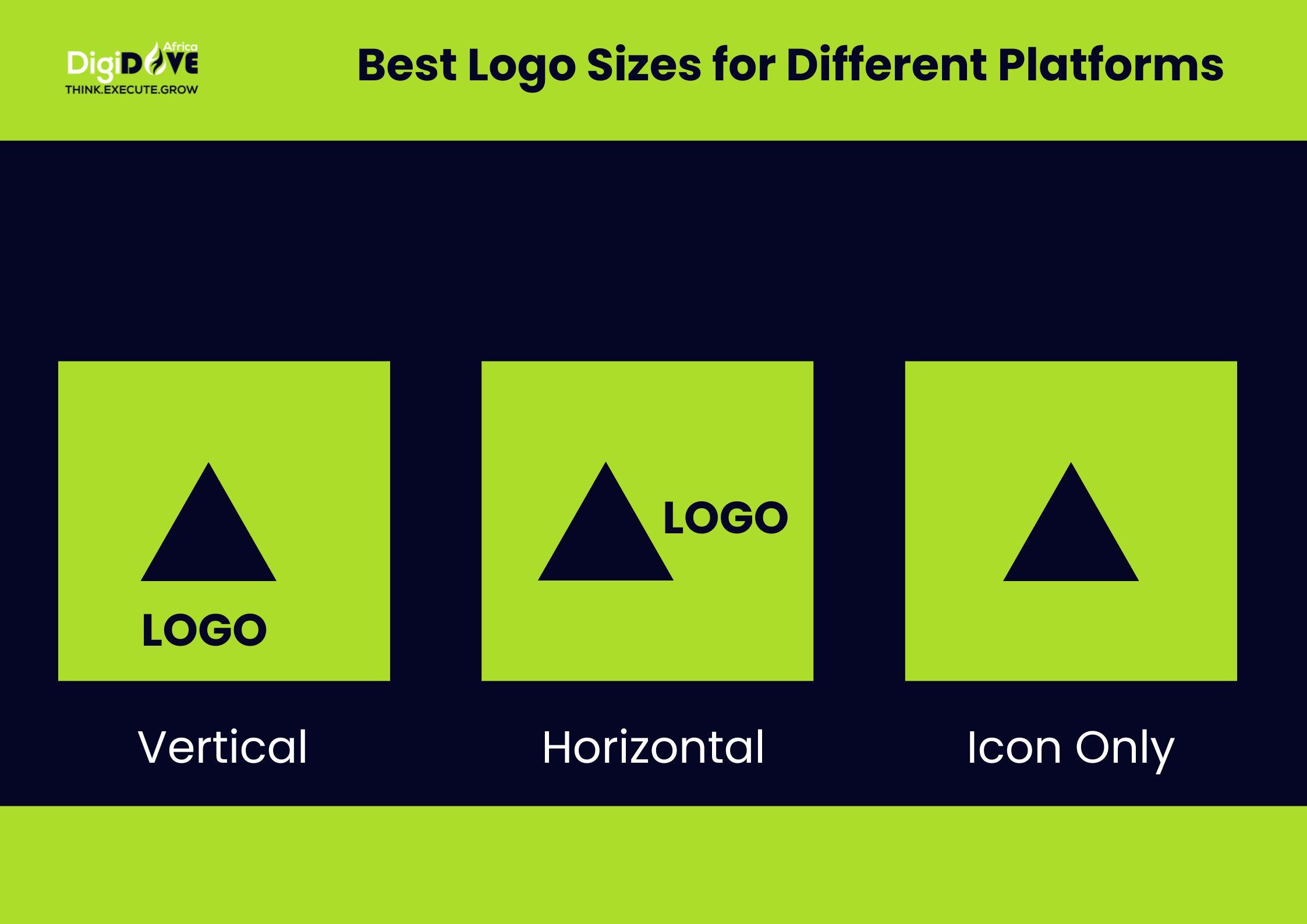
Best Logo Size: Complete Logo Size Guidelines for Websites, Social Media & Print
Discover the best logo size for websites, social media, and print. Learn logo size guidelines, standard dimensions, and tips to keep your brand looking sharp across all platforms.
Your logo plays a powerful role in shaping how people perceive your company, which is why it’s essential to keep it clear, sharp, and professional across every platform. One of the most common questions during a branding journey is: “What is the best logo size?” The truth is—there isn’t just one answer.
From website headers and favicons to Instagram posts, business cards, or even tote bags, your logo must adapt seamlessly without losing quality or appearing pixelated. That’s why understanding logo size guidelines is critical. Each platform—whether web, social media, or print—requires specific dimensions to ensure your design looks its best.
By preparing different variations of your logo, you’ll make resizing and scaling effortless while protecting your brand’s visual identity.
In this guide, we’ll break down the standard logo sizes for websites, social media, and print so your brand always makes a bold, professional statement wherever it appears.
Leave your mark confidently—and make sure your logo always looks its best.
Logo Size Essentials

When it comes to keeping your brand identity professional across different platforms, it’s not just about knowing the best logo size—it’s also about preparing your logo in different formats and variations. Here are the essentials every business should follow:
1. Have Logo Variations
Different platforms have unique requirements, which means a one-size-fits-all approach won’t work. Preparing several logo variations ensures adaptability and consistency across all mediums. Consider creating:
- Size variations – Horizontal (landscape), vertical (stacked), icons (submarks/brandmarks/symbols), emblems, or favicons.
- Color variations – Black, white, grayscale, monochrome, transparent background, and versions for colored backgrounds.
- Logo type variations – Your master logo design may include a wordmark (just your company name), a version with your slogan, or a simplified version without text for small spaces.
2. Understand File Formats
Your logo should always be saved in vector formats like PDF or SVG, which are scalable without losing quality. Vector files act as the master copy and can easily be exported into web-friendly formats such as JPG or PNG. Using the right file format ensures your logo remains crisp whether online or in print.
3. Pay Attention to Resolution
Resolution plays a key role in how sharp your logo looks. Here’s what you need to know:
- PPI (Pixels Per Inch): Used for digital screens. The higher the PPI, the sharper the image.
- DPI (Dots Per Inch): Used for print. Determines how much ink is used and directly impacts print quality.
- Image Resolution: Expressed in width x height (e.g., 500 × 500 px). Always start with higher resolutions for flexibility.
- File Size (Bytes): Measured in KB, MB, or GB. Larger files carry more detail but may need optimization for web use.
4. Consider Scalability
Always design your logo with scalability in mind. It’s easier to shrink a large logo than to enlarge a small one without pixelation. Tools like an image resizer can help you adjust dimensions while maintaining clarity.
5. Keep Your Logo Consistent
Consistency is key in branding. A brand style guide should outline proper logo usage, including dimensions, placement, and color rules. This ensures your logo is always represented correctly—whether on your website, social media, merchandise, or print materials.
Logo Sizes for Websites
Placing your logo on your website is one of the best ways to create an instant connection with visitors. A clear, high-quality logo enhances user experience and strengthens your brand identity. The most common placements include the website header and the favicon.
Website Header Logo Size
Most brands place their logo in the top navigation bar (usually on the left side). The ideal website logo size depends on your site builder and theme, but here are some standard dimensions:
- Vertical layout: 160 × 160 px
- Horizontal layout:
- 250 × 150 px
- 350 × 75 px
- 400 × 100 px
Favicon Logo Size
A favicon (the tiny icon displayed in browser tabs) ensures your brand remains visible even when users switch between multiple sites. Standard favicon sizes are:
- 16 × 16 px
- 32 × 32 px
- 48 × 48 px
Email Signature Logo Size
Adding a logo to your email signature boosts professionalism and reinforces brand presence. Recommended size:
- 320 × 70–100 px
Logo Sizes for Social Media
Every social media platform has its own requirements for profile pictures, cover images, and thumbnails. To keep your logo looking sharp across platforms, follow these social media logo size guidelines:
- Profile Photo: 180 × 180 px
- Cover Photo: 820 × 310 px
- File Type: PNG
- Profile Photo: 110 × 110 px
- File Type: JPEG (Note: Instagram automatically converts files to JPEG, which may slightly affect PNG quality)
- Profile Photo (circular): 400 × 400 px
- Cover Photo: 1128 × 191 px
- File Type: JPG or PNG
Twitter (X)
- Profile Photo (circular): 400 × 400 px
- Cover Photo: 1500 × 500 px
- File Type: JPG or PNG
- Profile Photo (circular): 165 × 165 px
- File Type: JPG or PNG
TikTok
- Profile Photo: 200 × 200 px
- File Type: JPG or PNG
YouTube
- Profile Photo (circular): 800 × 800 px
- Thumbnail: 1280 × 720 px
- Cover Photo: 2560 × 1440 px
- File Type: JPG, PNG, BMP
Google My Business
- Profile Photo (circular): 720 × 720 px (minimum 250 × 250 px)
- Cover Photo: 1024 × 576 px
- File Type: JPG or PNG
Logo Sizes for Print
When it comes to printing your logo, quality and consistency are key. The best practice is to use a vector file format (SVG or PDF), as these are infinitely scalable without losing resolution. This ensures your logo will look just as crisp on a small business card as it does on a large billboard.
Color Modes for Print vs Digital
It’s also important to understand color modes:
- CMYK (Cyan, Magenta, Yellow, Black): Standard for print materials. Always design your logo in CMYK to maintain accurate color reproduction.
- RGB (Red, Green, Blue): Used for digital screens.
- HEX codes: Web-specific color references for digital branding.
By starting with CMYK, your logo can be adapted to RGB or HEX with minimal color shifts.
Standard Print Logo Sizes
Here are some common logo size guidelines for different print materials:
- Business Cards
- US Standard: 3.5 in × 2 in
- Mugs
- Standard 11 oz mug: 7.5 in × 3 in
- Hats
- Recommended logo width: 3–3.5 in (depending on hat type)
- T-Shirts
- Maximum print area: 14 in × 15 in
- Chest pocket logo: approx. 4 ⅜ in × 5 ⅜ in
- Tote Bags
- Ideal print area: 14 in × 16 in (sizes may vary by bag type)
- Letterheads
- A4 (most common worldwide): 210 mm × 297 mm
- US Standard: 8.5 in × 11 in
- Envelopes
- No. 10 standard business envelope: 4 ⅛ in × 9 ½ in
Whether you’re printing on stationery, merchandise, or large-scale signage, following these print logo size guidelines ensures your brand always looks professional.
👉 Ready to get your logos designed to perfection?
Contact Digidove Africa today or visit our website to create scalable, print-ready logo designs that stand out everywhere.

